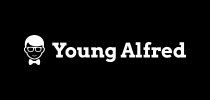If you came to me as a prospective home buyer and asked to go out shopping for houses, there are two things I would ask you:
- What do you want in a house and
- What do you need in a house?
To many people, this subtlety is lost. If buyers tell me their home needs to be at the end of a cul-de-sac, so be it: they’re the clients.
But let’s be honest: You need a roof over your head, running water, heat, and — depending on your latitude — maybe air conditioning. But you want four bedrooms, a white picket fence, and a pool.
If you’re planning on buying a home anytime soon, let me give you some helpful advice: Be prepared to distinguish needs from wants so that you can be confident about which homes you want to make offers on when the time comes. Here’s how:
What’s Ahead:
Start with your dream home…
Envision your ideal home. Does it have a huge plot of land for your dogs to run around? Or is it a high-rise condo overlooking big city lights? Where is it and what makes it special to you? Now, think about your budget: How much house can you really afford?
If you’re ready to shop for homes, you should have already gotten a pre-approval from a lender. So, with that price in mind, you may need to forgo some of the wants. Unsure what’s reasonable and what’s not in your price range? This is where your agent comes in. One of the main roles of a real estate agent is to know the area, know what homes are going for, and about how much added features — like an additional bedroom or a pool — should add to the price.
Related: Learn how much house you can afford based on your monthly income
…then work backwards
As you put together the picture of your dream home, you may discover that there are features you don’t want to sacrifice and for which you’re willing to pay more. Maybe it’s living within a thirty minute drive from work, an open kitchen or family room, or even something less common, like wheelchair access for a family member.
Sometimes, the wants are easy to distinguish from needs because you’ll find yourself saying “a pool might be nice.” But another way to look at it is: wants are things that you can add or change on your own.
For example, maybe you’re a chargers fan and want a home with yellow walls and blue carpet. Obviously, with a little effort, it’s easy to change these things after you move. If you watch cable house-hunting shows, it can be maddening to see couples turn down home after home because the flooring isn’t right or it doesn’t have a patio.
Some people don’t even want to consider getting their hands dirty and working on their home themselves, but trust me, finding a great home at a good price is infinitely easier when you’re flexible on wants.
Focus on “value items”
In real estate, a value item is a feature that adds value to the property to future buyers.
When evaluating your needs and wants, it’s a good idea to consider value items with more weight than things that are personal preference but add little value.
Items that add value include dual-pane windows, granite countertops, hardwood floors, land, nice landscaping (but don’t forget you’ll have to maintain it) and even intangibles like a beautiful view and being in a top-rated school district.
A great real estate agent will be able to help you determine the difference between a valuable feature and personal touch.
Of course, some big features don’t always add value. For example: Does a pool add value? It depends. Lee Dworshak of Keller Williams LA Harbor Realty explains on the National Association of Realtors website:
“Those buyers who want a house with a pool are usually not willing to pay much for it and in some areas of the country having a pool may even be perceived as a negative to many prospective buyers. Some folks just don’t like them or have young children and are afraid of the safety risks.”
So a pool is kind of a toss-up depending on where you live.
Anything too personal may lack value in terms of resale … or even subtract it. Examples I’ve seen include a giant meditation platform in the backyard, chicken-coops, or bright yellow walls. You may fall in love with the giant mural that the current homeowners painted in their child’s room. After all, your son loves He-Man too! Just keep in mind that when you go to sell, someone will want to repaint over it, and they’ll count the cost of repainting when they consider what to pay for the home. Things that add value are generally thought of as beautiful, safe or convenient by the majority of people. Things with no value are special to you for a reason that other people might not understand or want.
As you prepare to buy a home, remember that no home is perfect. Whether finding a place to rent or buy, you will always end up making compromises. But with a good understanding of what’s most important to you, what you can live without and what will add value to the home, finding the right one will be easier.
Use a home-buying checklist
I tell my clients to create a home buying checklist of the features they want and need so I can help them determine what’s feasible within their budget. You can use a similar checklist before you go out looking at houses. In fact, print it, fill it out and bring it to your real estate agent on the first appointment. See if that doesn’t knock her socks off!
Download our free sample home buying requirements checklist here »
Don’t forget homeowners insurance
Don’t Forget! You’ll need to factor in the costs of home insurance. It’s an important line on the home buying checklist that most people leave for the last minute. However, shopping around early gives you the best chance of getting the best rate possible.
Here are some places you can start looking for homeowners insurance quotes:
Young Alfred
Young Alfred – an insurance marketplace – partners with 40 insurance companies in an attempt to find you the best rate possible. Their application process is surprisingly entertaining and, even better, it’s super quick.
Young Alfred works with insurers from all 50 states, so you’re sure to find a company that works for you. Plus, Young Alfred has some stellar customer service, so you’ll always have help available if you need it.
Policygenius
 Policygenius is another insurance marketplace that’s geared towards helping customers find a variety of rates and terms, so you can decide which one works best for you.
Policygenius is another insurance marketplace that’s geared towards helping customers find a variety of rates and terms, so you can decide which one works best for you.
While their application process isn’t as fun-loving as Young Alfred, it’s equally as quick, if not even faster. After filling out the application, you’ll be led to a page with many reliable, top-notch insurers, where you’ll see their terms and rates laid out clearly.
Read more:
Need more help finding the right house? Money Under 30 has every topic covered:
- First time home-buying guide
- How much house can you afford?
- How much cash you really need to close on a home
- Shop around for the mortgage lender that will give you the best loan for your needs
Editor’s note: This article was originally published in July 2012. It has been thoroughly updated for relevance and accuracy.


